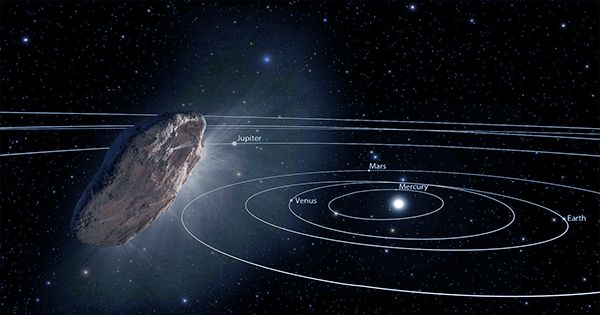Two new studies have provided some incredible insights into the interstellar comet 2i / Borisov that were discovered in August 2019, and its home planetary system probably contains a gas giant planet. It’s really amazing that so much can be learned based on what the comet is made of. In the first part of a study published in Nature Communications, researchers determined that the comet was ultimately primitive – perhaps the most observational we have ever seen.
The team found a striking resemblance between this object and the comet Hell-Bopp, which was visible to the naked eye from Earth in 1996 and 1997. Scientists believe that Hell-Bopp was only primitive and unchanged when it came to a second visit to the inner solar system given.
Comet Borisov is even more spiritual, so the researchers in this study believe that it was formed in another solar system and was later expelled without approaching other stars. Dr Alberto Cellino, a co-author of the study, from the Astrophysical Observatory of Torino, National Institute for Astrophysics (INAF), Italy, said in a statement, “The fact that these two comets are remarkably similar indicates that the environment in which 2I / Borisov originated is not so different from the environment in the early solar system.”
The observations were made possible thanks to the very large telescope of the European Southern Observatory. One of ESO’s observations, the Atacama Large Millimeter / submillimeter Array (ALMA), was used for a second study that was published in Nature Astronomy. The team, led by Dr. Bin Young, an astronomer from Chile’s ESO, studied the grains exposed by comets because they were heated by the sun. As this process occurs, the comet’s ice nucleus forms a dusty envelope (coma). Young and his team established that the coma was made of compact grain one millimeter (0.04 inch) in size or larger.
Scientists also found that the amount of carbon monoxide and water was relatively lost in the comet after the change in levels. It suggested that comets were made of materials that were made in different places within that star system. The team believes that in the presence of giant planets, triggered by their larger gravity, primitive elements could help create this object. “Imagine how lucky we are that a comet from a system a few years away from the system simply traveled to our doorstep,” Young said.Comet Borisov was the first interstellar comet, researchers believe many more will be discovered in the coming years – and the European Space Agency is preparing to chase one when the event unfolds. Armagh Observatory and Planetarium’s top author. “The ESA plans to launch a comet interceptor in 2029, so that if there is the ability to reach any other intercity object, if a suitable trajectory is found,” explained Stefano Bagnulo.














